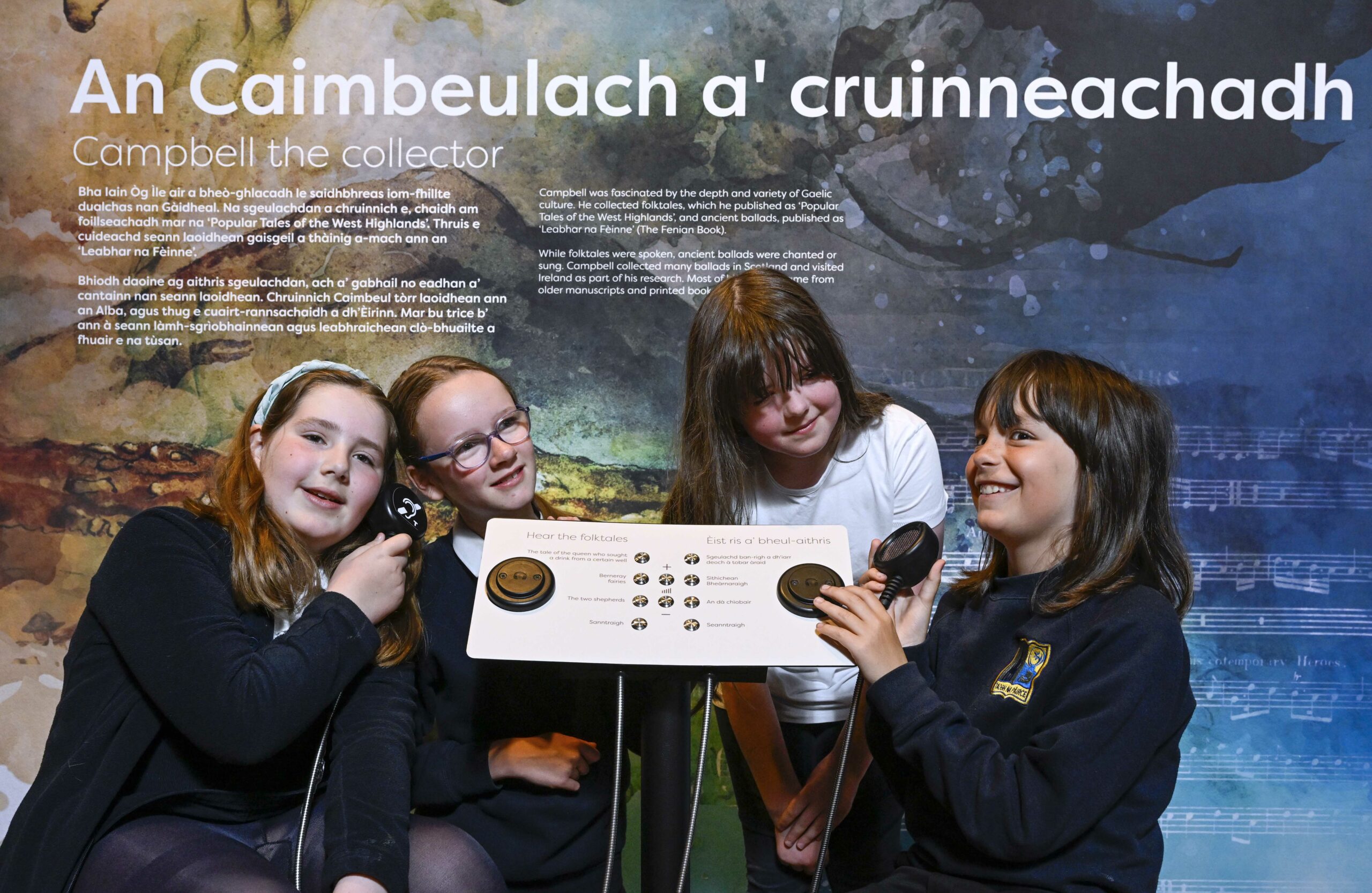The National Library of Scotland (NLS) has launched its first ever Gaelic language exhibition.
The exhibition invites visitors to hear and learn about folk-tales told for centuries in the Gaelic-speaking areas of Scotland, and how they have been preserved for current and future generations.
The interactive exhibition is focused around the works of Gaelic folklorist John Francis Campbell who gifted his collection to The Faculty of Advocates, the predecessor of the NLS, when he died in 1885.
John Francis Campbell was born into a wealthy family in 1821.
He grew up on the family’s estate on Islay but was largely taken care of by the family’s piper which is where he developed his passion for Gaelic.
The Scottish Education Act of 1872 effectively put an end to Scottish Gaelic education and repressed it to such an extent that pupils were often physically punished for speaking the language.
This did irreparable damage to Scottish Gaelic culture making the work displayed at NLS all the more vital.

National Librarian Amina Shah said: ‘We’ve really enjoyed working with partners around the country in the development of this exhibition. It’s a natural fit for us given we have the largest collection of Scottish Gaelic manuscripts in the world – some dating as far back as the 14th century.
‘We want to do more to promote Gaelic and do it better. It feels like this exhibition – taking a Gàidhlig-first approach – is a turning point for us.
‘We’re excited to play our part in what feels like a resurgence in Gaelic language in Scotland.’
Campbell collected folk stories, starting in 1859 from around the highlands and islands, and ensured that these pieces of oral history were saved whilst they were still remembered.
His journals were detailed and extensive, often illustrated in his own unique style, largely ink sketches brought to life with water colour.
His seminal piece of writing was the bilingual ‘Popular Tales of the West Highlands’ published in 1860.
The audiovisual elements of the exhibition, which take place in a recreated traditional blackhouse, are the result of collaborations with Gaelic-medium schools, students, Gaelic storytellers, musicians, and colleagues from The City of Edinburgh Council and the University of Edinburgh.
Six students from Bun-sgoil Taobh na Pàirce, the Gaelic speaking Parkside Primary School in Leith, attend the launch.
Campbell had a talent for imbuing his paintings with a powerful sense of place.
He painted famous outlaw and folk hero Rob Roy McGregor’s ruined house in Glen Shira in Argyll and incorporated soot from one of the remaining roof beams into his watercolour of the scene.
Manuscript curator Dr Ulrikke Hogg mentions how Campbell would mix peat from his painting sites into his watercolours to give an even richer sense of location.
The John Francis Campbell exhibit at The National Library of Scotland on George IV Bridge runs for nine months from 9 June 2023.
Read more news on Scottish Field’s news pages.
Don’t miss the June issue of Scottish Field magazine.
TAGS

